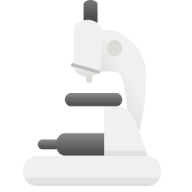Materials Required
Immortalized Human Primary Coronary Artery Endothelial Cells
Complete Endothelial Cell Growth Medium
Tissue culture flasks or plates (T25 or multiwell) pre-coated with Alphabiocoat
Phosphate-buffered saline (PBS), sterile
Cell detachment solution
Neutralizing solution
37°C humidified incubator with 5% CO₂
Centrifuge (for cell passaging)
Hemocytometer or automated cell counter
Cryopreservation medium
Liquid nitrogen storage system
Cell Culture Protocol
1. Thawing Frozen Cells
Coat Flask: Prepare a T25 flask by adding 1 mL Alphabiocoat. Incubate for 30 minutes at 37°C or overnight at 4°C. Aspirate excess before use.
Rinse: Wash the coated flask with sterile 1× PBS.
Warm Medium: Bring complete endothelial growth medium to 37°C.
Thaw Cells: Quickly thaw the cryovial in a 37°C water bath (1–2 minutes).
Dilute Slowly: Transfer contents to a 15 mL tube. Add 5 mL of pre-warmed medium dropwise to minimize osmotic shock.
Centrifuge: Spin at 200 × g for 5 minutes.
Resuspend & Plate: Remove the supernatant, resuspend the cell pellet in fresh medium, and seed into the prepared flask.
Incubate: Place in a 37°C, 5% CO₂ incubator.
2. Routine Maintenance & Passaging
Daily Monitoring: Examine cells under a microscope. Healthy cells display a cobblestone-like morphology.
Medium Changes: Replace the medium every 2–3 days to prevent waste buildup.
Passaging at 80–90% Confluence:
Aspirate the medium and gently rinse with PBS.
Add cell detachment solution (1 mL for T25, 2–3 mL for larger flasks) and incubate for 2–3 minutes at 37°C.
Check under a microscope to confirm detachment.
Add 2–3 mL neutralizing solution to stop enzymatic activity.
Gently pipette to obtain a single-cell suspension.
Optional: Centrifuge at 200 × g for 5 minutes if further washing is needed.
Resuspend and replate at a 1:2 to 1:4 split ratio into fresh Alphabiocoat-coated flasks.
3. Cryopreservation
Harvest Cells: Follow the passaging procedure to collect cells.
Cell Count: Adjust to a final concentration of 1–5 × 10⁶ cells/mL in cryopreservation medium.
Aliquot: Dispense 1 mL per cryovial.
Freeze Gradually: Place vials in a controlled-rate freezing container or isopropanol freezing container at –80°C overnight.
Storage: Transfer vials to liquid nitrogen for long-term storage.
4. Key Considerations & Troubleshooting
✅ Morphology Check: Cells should form a cobblestone monolayer. Elongated or spindle-like cells may indicate contamination or stress.
✅ Avoid Over-confluence: Prolonged confluence may cause detachment or death.
✅ Low Passage Use: For optimal results, use cells within 20–30 passages.
✅ Prevent Contamination: Use sterile technique and antibiotics; endothelial cells are particularly sensitive to microbial contamination.
Expected Results
Initial Adhesion: Within 4–6 hours post-plating
Proliferation: Noticeable within 24–48 hours
Doubling Time: Approximately 24–36 hours, depending on cell line and growth conditions


